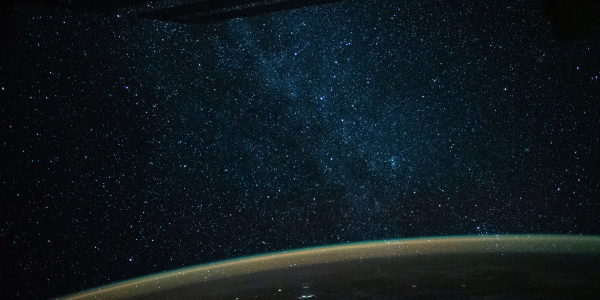St. Louis Astronomical Society Meeting - Thermodynamic Constraints on the Non-Baryonic Dark Matter Gas Composing Galactic Halos
To explain rotation curves of spiral galaxies through Newtonian orbital models, massive halos of non-baryonic dark matter (NBDM) are commonly invoked. Postulated properties are that NBDM interacts gravitationally with baryonic matter, yet negligibly interacts with photons. Since halos are large, low-density gaseous bodies, their postulated attributes can be tested against classical thermodynamics and the kinetic theory of gas. We consider macroscopic models because these make few assumptions. NBDM-NBDM collisions must be elastic to avoid generation of light, but this does not permit halo gas temperature to evolve. If no such collisions exist, then the impossible limit of absolute zero would be attainable since the other available energy source, radiation, does not provide energy to NBDM. The alternative, an undefined temperature, is also inconsistent with basic thermodynamic principles. However, a definable temperature could be attained via collisions with baryons in the intergalactic medium which deliver kinetic energy to NBDM. But light would be produced since some proportion of baryon collisions are inelastic, thereby rendering the halo detectable. Collisions with baryons are unavoidable, even if NBDM are essentially point masses: < 0.0001 times the size of a proton is needed to avoid scattering with gamma-rays, the shortest wavelength used to study halos. If only elastic collisions exist, NBDM gas would collapse to a tiny, dense volume (zero volume for point masses) during a disturbance, e.g., cosmic rays. NBDM gas should occupy central galactic regions, not halos, since self-gravitating objects are density stratified. In summary, properties of NBDM halos as postulated would result in violations of thermodynamic laws and in a universe unlike that observed.
Anne Hofmeister is a Research Professor in the Earth and Planetary Sciences Department at Washington University in St. Louis, Missouri. She was a tenured Associate Professor at University of California, Davis (1988-1994) and a Postdoctoral Fellow/Research Associate at the Geophysical Laboratory (1983-1987). Hofmeister received a PhD and MS in Geology from Caltech, a MS in Physics from University of Illinois, and a BS with Highest Honors in Physics and Literature from Harvey Mudd College. She has been awarded Fellowships by the Mineralogical Society of America, the David and Lucile Packard Foundation, and the Humboldt Foundation.
The St. Louis Astronomical Society is an organization for individuals interested in astronomy and telescopes. The public is invited to attend its meetings, telescope observing sessions, and special events. For more information about Astronomical Society events, please visit www.slasonline.org or call 314-962-9231. The event, cosponsored by NASA's Missouri Space Grant Consortium, is open to the public free of charge.
To get the link to the Zoom meeting if you are a non-member of SLAS, simply send a request to:

